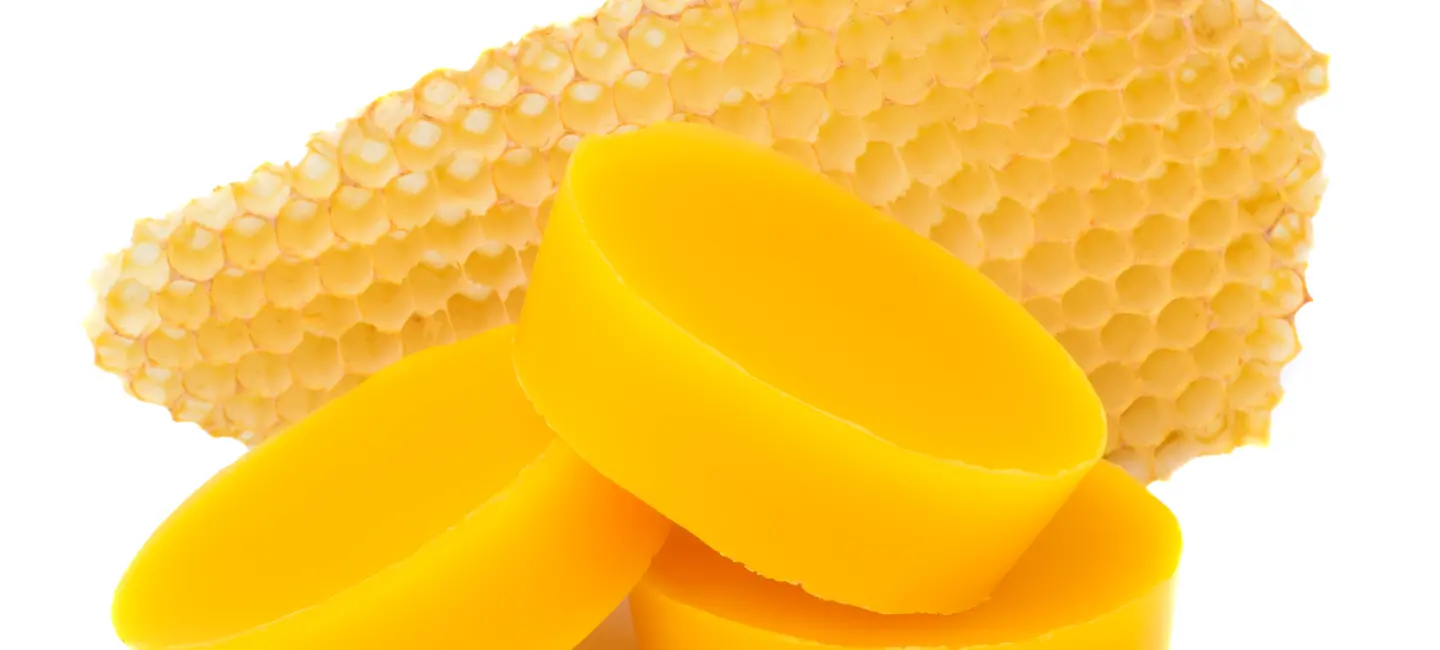
Beeswax is a product made from the honeycomb of the honeybee and other bees. The mixing of pollen oils into honeycomb wax turns the white wax into a yellow or brown color.
Beeswax is used for high cholesterol, pain, fungal skin infections, and other conditions. But there is no good scientific research to support these uses.
In foods and beverages, white beeswax and beeswax absolute (yellow beeswax treated with alcohol) are used as stiffening agents.
In manufacturing, yellow and white beeswax are used as thickeners, emulsifiers, and as stiffening agents in cosmetics. Beeswax absolute is used as a fragrance in soaps and perfumes. White beeswax and beeswax absolute are also used to polish pills.
Is It Effective?
NatMed Pro rates effectiveness based on scientific evidence according to the following scale: Effective, Likely Effective, Possibly Effective, Possibly Ineffective, Likely Ineffective, Ineffective, and Insufficient Evidence to Rate.
- Small tears in the lining of the anus (anal fissures). Early research shows that applying a mixture of beeswax, honey, and olive oil to the affected area for 12 hours reduces pain, bleeding, and itching due to anal fissures.
- Burns. Early research shows that applying a gauze with a mixture of beeswax, olive oil, and alkanna to second-degree burns speeds up healing and shortens the time spent in the hospital. Other early research shows that using a particular beeswax cream can decrease itching that occurs when a burn is healing.
- Diaper rash. Early research shows that applying a mixture of beeswax, honey, and olive oil to the affected area four times daily for 7 days reduces symptoms of diaper rash.
- Hemorrhoids. Early research shows that applying a mixture of beeswax, honey, and olive oil to the affected area for 12 hours reduces pain, bleeding, and itching due to hemorrhoids.
- Swelling (inflammation) and sores inside the mouth (oral mucositis). Early research shows that applying a mixture of honey, olive oil-propolis extract, and beeswax to mouth sores caused by cancer treatment helps speed up recovery time in people with severe ulcers. But it may not work as well in people with moderate ulcers. Also, applying honey by itself may work better than the beeswax mixture.
- Ringworm (Tinea corporis). Early research shows that applying a mixture of beeswax, honey, and olive oil to the affected area three times daily for 4 weeks improves ringworm.
- Jock itch (Tinea cruris). Early research shows that applying a mixture of beeswax, honey, and olive oil to the affected area three times daily for 4 weeks improves jock itch.
- A common fungal infection of the skin (Tinea versicolor). Early research shows that applying a mixture of beeswax, honey, and olive oil to the affected area three times daily for 4 weeks improves a fungal skin infection called tinea versicolor.
- Diarrhea.
- Hiccups.
- High levels of cholesterol or other fats (lipids) in the blood (hyperlipidemia).
- Pain.
- Stomach ulcers.
- Other conditions.
More evidence is needed to rate the effectiveness of beeswax for these uses.
Is it Safe?
Beeswax might help lower cholesterol levels, prevent infections, and help protect the stomach from ulcers caused by non-steroidal anti-inflammatory drugs (NSAIDs).
When taken by mouth: Beeswax is LIKELY SAFE for most people when taken by mouth as food or as a medicine. While rare, some people may have an allergic reaction to beeswax.
When applied to the skin: Beeswax is LIKELY SAFE for most people when applied directly to the skin. While rare, some people may have an allergic skin rash after applying beeswax.
Special Precautions & Warnings:
Pregnancy and breast-feeding: There isn't enough reliable information to know if beeswax is safe to use when pregnant or breast-feeding. Stay on the safe side and avoid use.
It is not known if Beeswax interacts with any medicines. Before taking Beeswax, talk with your healthcare professional if you take any medications.
There are no known interactions with herbs and supplements.
There are no known interactions with foods.
The appropriate dose of beeswax depends on several factors such as the user's age, health, and several other conditions. At this time there is not enough scientific information to determine an appropriate range of doses for beeswax. Keep in mind that natural products are not always necessarily safe and dosages can be important. Be sure to follow relevant directions on product labels and consult your pharmacist or physician or other healthcare professional before using.
Apic cerana, Apis Mel, Apis mellifera, Apis Mellifica, Bees Wax, Bleached Beeswax, Cera Alba, Cera de Abejas, Cera Flava, Cire d’Abeille, Cire d’Abeille Blanche, Cire d’Abeille Blanchie, Cire d’Abeille Jaune, Cire Blanche, Cire Jaune, White Beeswax, White Wax, Yellow Beeswax, Yellow Wax.
Information on this website is for informational use only and is not intended to replace professional medical advice, diagnosis, or treatment. While evidence-based, it is not guaranteed to be error-free and is not intended to meet any particular user’s needs or requirements or to cover all possible uses, safety concerns, interactions, outcomes, or adverse effects. Always check with your doctor or other medical professional before making healthcare decisions (including taking any medication) and do not delay or disregard seeking medical advice or treatment based on any information displayed on this website.
© TRC Healthcare 2024. All rights reserved. Use and/or distribution is permitted only pursuant to a valid license or other permission from TRC Healthcare.
